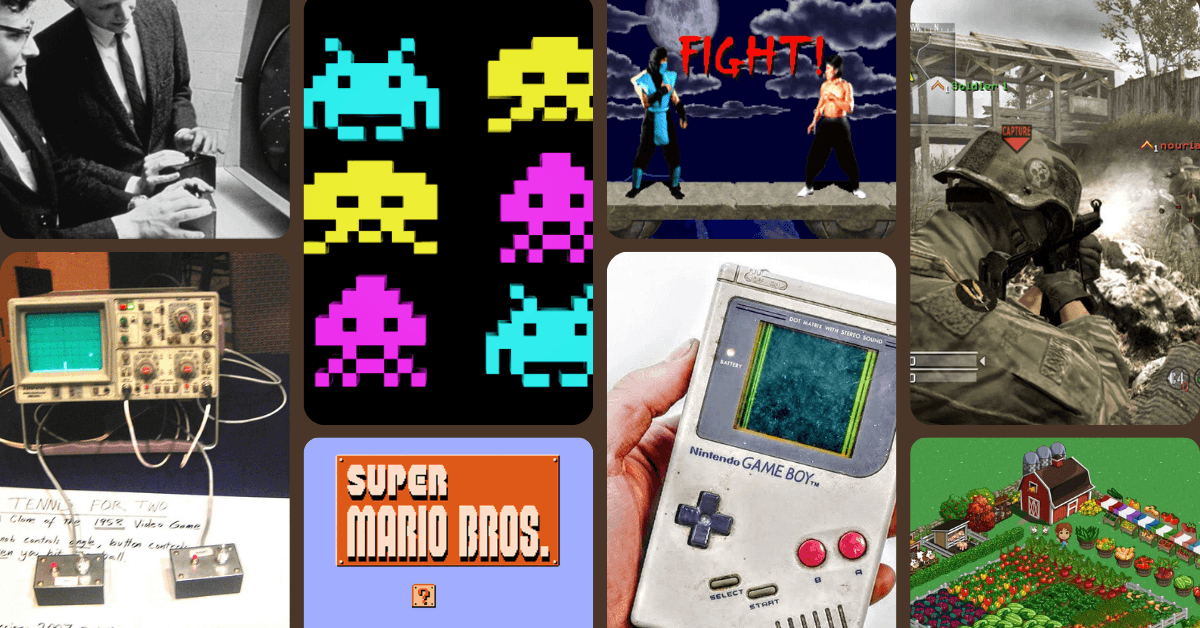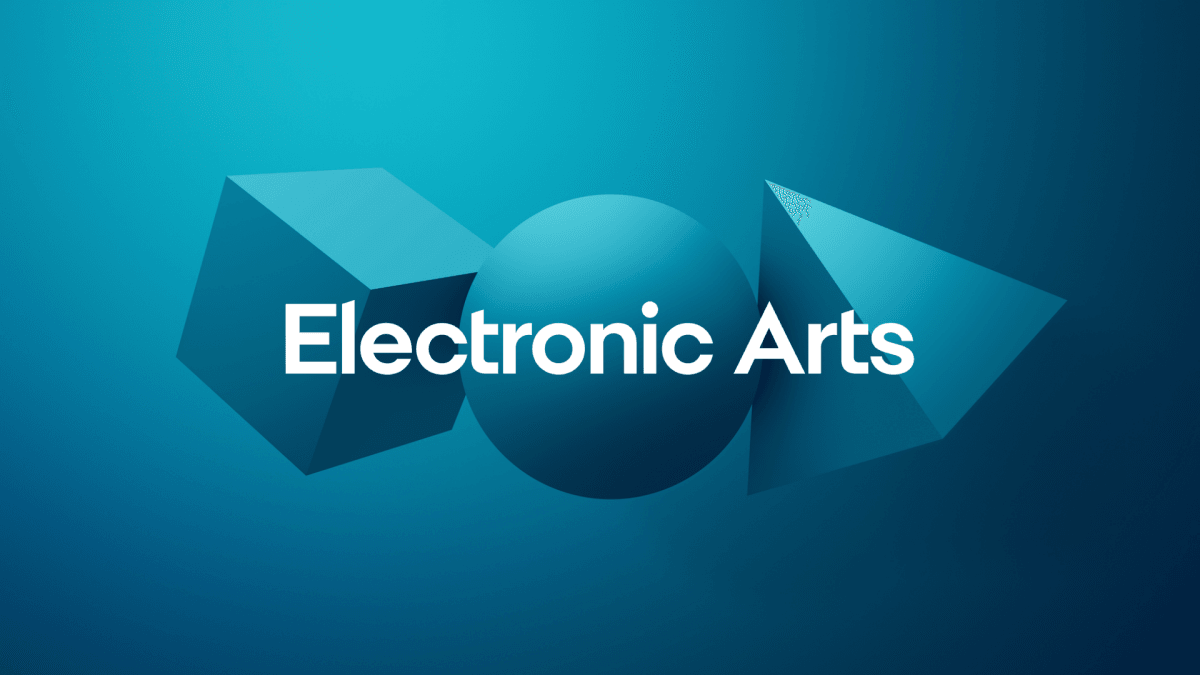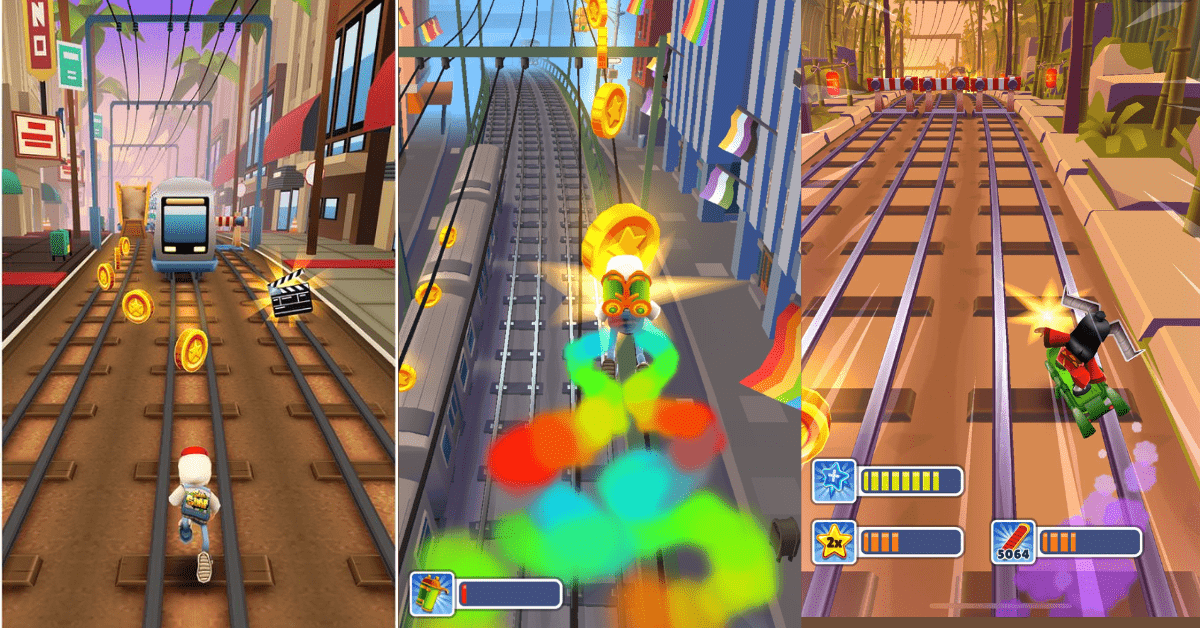Video games have evolved from simple lab experiments in the 1950s into a $100+ billion global industry enjoyed by billions of people. This guide presents a comprehensive timeline of major milestones in video game history across North America, Japan, Europe, and beyond.
We’ll start at the very beginning and journey through the eras of arcade mania, home console wars, PC and online gaming, the mobile gaming revolution, and modern trends like cloud gaming and virtual reality.

1950s–1960s: The First Video Games
The origins of video games trace back to computer laboratories.
In 1952, British engineer A.S. Douglas created a simple tic-tac-toe game called “OXO” on a vacuum-tube computer as part of his PhD research. A few years later in 1958, American physicist William Higinbotham built an interactive tennis game known as Tennis for Two for visitors at Brookhaven National Laboratory, using an oscilloscope screen to display a side view of a tennis court.
These early experiments were not sold commercially – they were tech demos showing what computers could do.

In 1962, Spacewar! was developed by MIT student Steve Russell on a PDP-1 minicomputer. Spacewar! let two players dogfight spacecraft and was the first game to be played at multiple computer labs, since its code spread to other universities.
While computers of the 1960s were big and rare, hobbyist programmers began exploring games on them. These pioneers established many concepts of gameplay even though their creations were confined to research institutions.
1970s: Birth of the Video Game Industry (Arcades and Consoles)
By the early 1970s, video games had left research labs and entered the public eye. What followed was the start of a brand-new entertainment industry.

The First Arcade Machines
The first commercial arcade game was Computer Space, created in 1971 by Nolan Bushnell and Ted Dabney. It wasn’t a major success, but it paved the way.
Then came Pong in 1972. Atari released it as a coin-operated arcade machine, and it quickly became a hit. Pong’s simple table tennis gameplay and accessible design helped video games gain popularity in bars, arcades, and other public spaces.
As Pong’s success exploded, imitators flooded the market. Atari followed up by releasing a home version of Pong in 1975, which also sold extremely well. This signaled a growing interest in gaming beyond arcades.

The First Home Consoles
While arcades were heating up, home gaming quietly began with Ralph Baer. In 1967, Baer built a prototype called the “Brown Box”, which could display games on a television screen.
Baer’s invention led to the Magnavox Odyssey, released in 1972 — the world’s first home video game console. The Odyssey played simple ball-and-paddle games and came with plastic screen overlays. It was basic but revolutionary, starting the idea of gaming on your TV.

Major Tech Shifts: From Built-in Games to Cartridges
Early consoles like the Odyssey only played built-in games. That changed with the rise of microprocessors and game cartridges in the mid-1970s.
In 1977, Atari launched the Atari 2600, a cartridge-based console that came with joystick controllers. It became the first widely adopted home console, selling over a million units.
More importantly, it introduced a new business model — players could buy one console and expand their game library over time. That model still defines home consoles today.

Early 1980s: Arcade Boom and the 1983 Crash
Meanwhile, arcades weren’t slowing down — they were evolving.
In 1978, Japanese developer Taito released Space Invaders, igniting a full-blown arcade craze. The game became so popular in Japan it reportedly caused a coin shortage. Space Invaders helped push arcade machines into malls, restaurants, and convenience stores.

Blockbusters followed: Pac-Man (1980) by Namco became a global icon, and Donkey Kong (1981) by Nintendo introduced a character named Mario, who would go on to dominate the industry.
By 1982, arcade games were making more money than music and movies combined.
Video games had moved from novelty to mainstream — and were becoming a permanent part of youth culture.
Adoption of Home Consoles
At the same time, home consoles were also in many households – especially the Atari 2600 – and new consoles from Mattel and Coleco appeared.
However, the console market in North America became overcrowded and was poorly regulated.
In 1983 this culminated in the infamous video game crash of 1983 (primarily affecting the U.S. market).
The crash had several causes: an oversaturated market of consoles and low-quality games, loss of consumer confidence, and growing competition from affordable personal computers like the Commodore 64.
A high-profile flop was Atari’s E.T. the Extra-Terrestrial game (1982), which was rushed to market and so disappointing that unsold cartridges ended up buried in a New Mexico landfill. Retailers lost faith in video games, sales plummeted, and many game companies went bankrupt during 1983–1984.
Global Perspective
The 1983 crash was largely an American phenomenon.
In Japan, the console and arcade industries kept thriving – Japanese consumers were enjoying the recently launched Nintendo Famicom console (more on that soon) and hit arcade games.
In Europe, the impact was also cushioned.
European gamers in the early 1980s had been shifting toward home computers (like the British ZX Spectrum and Commodore 64) for gaming rather than consoles.
By 1983 the games market in Europe was already based around personal computers like the Spectrum and C64, so the collapse of the U.S. console market didn’t leave Europe devoid of gaming.
Thus, while 1983 was a crisis year that nearly killed the console business in North America, video games globally still had strong footholds in arcades and computing.

Late 1980s: Nintendo and the First Console War
Video games got a second life in 1985 thanks to a Japanese company that would soon dominate the industry.
Nintendo released its Family Computer (Famicom) console in Japan in 1983, right around the time of the U.S. crash. In 1985, a redesigned Famicom came to North America as the Nintendo Entertainment System (NES), effectively reviving the console market in the United States.
The NES packed superior 8-bit graphics and sound compared to 1970s consoles, and Nintendo imposed strict quality control on games to avoid another flood of poor-quality titles.
The result was a smash success.

Classic games like Super Mario Bros. (1985), The Legend of Zelda (1986), and Metroid (1986) turned the NES into a must-have device, and by the late ’80s a generation of kids worldwide was growing up with Nintendo in their living rooms.
In Europe, the NES arrived by 1986–87 and contributed to a gradual shift from micros to consoles.

First Console War: Nintendo vs Sega
Nintendo’s success started the third generation of consoles and established Japan as a leader in the post-crash era. But it wasn’t long before competitors emerged, leading to what’s often called the first console war.
Sega – another Japanese company known for arcades – had released the Master System in 1986, but it struggled against the NES.
Sega’s real push came with the 16-bit Sega Genesis (called Mega Drive in Japan/Europe) in 1988 (Japan) and 1989 (North America). With clever marketing touting its technological edge (“16-bit” graphics and faster gameplay) and the debut of Sega’s mascot Sonic the Hedgehog in 1991, the Genesis made major inroads against Nintendo.
Nintendo responded by launching the Super Nintendo Entertainment System (SNES), its own 16-bit console, in 1990 (Japan) and 1991 (NA/EU).
This kicked off the 1990s console rivalry in earnest.
For a few years, Nintendo vs. Sega defined gaming culture.
Each company produced hit games and attempted to one-up the other. New franchises proliferated on both systems – for example, Capcom’s Street Fighter II (1991) and Midway’s Mortal Kombat (1992) were massive fighting-game hits on 16-bit consoles.

The Creation of Rating Systems
Notably, Mortal Kombat’s violent content (blood and “fatality” moves) sparked public concern.
In the U.S., this led to Congressional hearings on video game violence and the creation of rating systems.
Sega preemptively created its own age-rating council in 1993, and by 1994 the industry formed the ESRB (Entertainment Software Rating Board) to rate games for content – a system still used today.
This was a cultural milestone, showing that video games had become significant (and occasionally controversial) in society.

Handheld Gaming
In 1989, Nintendo also introduced the world to handheld video gaming with the Game Boy.
The 8-bit Game Boy, bundled with the addictive puzzle game Tetris, was a huge hit globally.
For the first time, players could take games on the go – whether on a long car ride or in the schoolyard. Over the next decades Nintendo would iterate on this success with devices like the Game Boy Color (1998) and Game Boy’s successors in the 2000s.
Other companies tried handheld systems (Sega’s Game Gear in 1990, Atari’s Lynx in 1989), but none matched the Game Boy’s popularity at the time. Handhelds became a significant segment of gaming, especially in Japan where commuters enjoyed gaming on portable devices.
By the end of the 1980s, the video game industry was clearly reborn and booming again.
Nintendo had sold tens of millions of NES units worldwide, Sega was fiercely challenging them in the console space, and game characters like Mario and Sonic were as recognizable to kids as Mickey Mouse.
In arcades, the boom of the early ’80s had cooled somewhat, but arcades remained popular social venues (with late-’80s hits like Double Dragon and Street Fighter keeping the flame alive).
Importantly, the center of gravity of the industry had shifted – Japanese companies and creativity were now at the forefront of console gaming internationally, while in Europe and North America both consoles and personal computers shared the gaming market.
1990s: 3D Graphics and the Rise of New Platforms
The 1990s brought rapid innovation in video games, marked by leaps in technology – most notably the transition from simple 2D graphics to real-time 3D graphics. It also saw new competitors enter the console market and the continued growth of PC gaming and new genres.
Around 1994–1996, the industry entered a new generation – often called the fifth generation – of 32-bit and 64-bit consoles that enabled polygonal 3D graphics.
This was a transformative jump in game visuals and design.
In 1994, electronics giant Sony entered the fray with the PlayStation, a CD-ROM based 32-bit console.
Meanwhile, Sega launched the 32-bit Sega Saturn in 1994 as well (Japan) and 1995 (North America), and Nintendo countered with the Nintendo 64 (a 64-bit cartridge-based system) in 1996.
The stage was set for a new kind of console war, now with three major players.

PlayStation Emerges as the Dominant Platform
Sony’s PlayStation quickly emerged as the era’s dominant platform.
The Sega Saturn launched early in 1995 but was expensive and initially hard to develop for; Sony arrived a few months later in 1995 with the PlayStation at a lower price and strong marketing.
The PlayStation’s use of CD-ROMs allowed for larger games and full-motion video, which attracted many third-party game developers. While Sega and Nintendo each had hit 3D titles (Sega’s Virtua Fighter series on Saturn, Nintendo’s seminal Super Mario 64 and The Legend of Zelda: Ocarina of Time on N64), Sony secured a broader range of games by courting developers.
Franchises like Final Fantasy (which famously jumped from Nintendo to PlayStation with FFVII in 1997) and Resident Evil flourished on the PlayStation.
Simply put, Sony dominated the late ’90s console market.
The original PlayStation became the first console to ship over 100 million units worldwide, and Sony’s brand became synonymous with “cool” gaming for teens and young adults.
Nintendo’s N64, though not as ubiquitous as PlayStation, still produced groundbreaking games and maintained Nintendo’s fanbase (especially for family-friendly and first-party titles). Nintendo stuck with cartridges, which limited storage, but it gave the N64 advantages in speed and helped pioneer split-screen multiplayer in games like GoldenEye 007 (1997).
Notably, the N64 also introduced Pokémon to home consoles (with Pokémon Stadium), while on handheld the Pokémon franchise (debuting on Game Boy in 1996) became a global cultural phenomenon.
Sega, unfortunately, faltered – the Saturn underperformed outside of Japan, and Sega found itself in a distant third place. This set the stage for Sega’s last attempt at a console (the Dreamcast) at the decade’s end.

PC Gaming and New Genres
Throughout the ’90s, personal computer gaming also surged, introducing genres and experiences less common on consoles.
In 1993, id Software’s Doom brought first-person shooter (FPS) action to PCs, complete with 3D-like graphics and networked multiplayer. Doom (and its predecessor Wolfenstein 3D) became cultural touchstones and were widely played (often illicitly on office and school computers), popularizing the FPS genre.

Real-time strategy games also took off on PC with titles like Warcraft (1994) and Command & Conquer (1995).
Perhaps the biggest PC gaming impact of the late ’90s was online multiplayer.
While rudimentary multiplayer existed before, the spread of the internet in the mid-90s enabled games where players could compete or cooperate globally. Blizzard’s Diablo (1996) and StarCraft (1998) and id’s Quake II (1997) all featured internet play.
South Korea in particular embraced online PC gaming; Blizzard’s StarCraft sold over a million copies in Korea in 1998 alone (about one-third of its global sales) and became a national obsession, spurring the rise of professional esports tournaments there.
Massively multiplayer online role-playing games (MMORPGs) also began to appear, such as Ultima Online (1997) and EverQuest (1999), pointing to the connected future of games.

2000s: Online Gaming and the New Console Wars
By the end of the 1990s, the gaming landscape had changed dramatically from a decade earlier. 3D graphics were now standard, consoles used CDs, and video games had grown up alongside their audience – stories became more complex and graphics more realistic.
In 2000, Sony released the PlayStation 2, which would go on to become the best-selling console of all time at over 155 million units.
The PS2’s ability to play DVD movies also helped it penetrate the market. Meanwhile, Sega launched the Dreamcast in late 1998 (Japan) / 1999 (US) as the first 128-bit console.
The Dreamcast was innovative – it had a built-in modem for online play and ahead-of-its-time titles – but it couldn’t compete with Sony’s momentum and the upcoming challengers. In 2001, Sega discontinued the Dreamcast and exited the console business, reinventing itself purely as a game software company. The stage was set for a new millennium with new players.

New Console Wars
The 2000s opened with the console market expanding to three major hardware makers: Sony, Nintendo, and for the first time, Microsoft.
In 2001, Microsoft (famous for Windows PC software) entered gaming by launching the Xbox console.
The Xbox aimed to bring PC-like power to the living room and even included a built-in hard drive – a first for consoles. It also was the platform for the hit game Halo: Combat Evolved (2001), which helped put the Xbox on the map.
Now the console wars involved Sony vs. Microsoft vs. Nintendo, each with a distinct strategy. Sony’s PlayStation 2 was the market leader with a vast game library. Microsoft’s Xbox was a powerful new contender appealing to hardcore gamers (especially in North America). And Nintendo’s GameCube (2001) offered beloved Nintendo franchises at a lower price point and in a compact form.
Nintendo’s GameCube didn’t match the sales of PS2 or Xbox, but it kept Nintendo in the game, relying on exclusives like Super Smash Bros. Melee and The Legend of Zelda: Wind Waker.

Online Multiplayer Gaming
One of the biggest advancements of the 2000s was the rise of online multiplayer gaming on consoles.
In 2002, Microsoft launched Xbox Live, a subscription online service for the Xbox that allowed players to compete over the internet with voice chat.
Services like Xbox Live (soon followed by Sony’s and Nintendo’s online efforts) brought the kind of online play PC gamers had to consoles, greatly enhancing the social aspect of gaming.
Flagship Xbox titles like Halo 2 (2004) demonstrated the appetite for online console gaming by attracting millions of players. Meanwhile, on the PC side, Blizzard’s World of Warcraft (2004) became a global phenomenon, popularizing the MMORPG genre with over 10 million subscribers at its peak.
Online gaming was becoming a standard expectation, whether on PC or console.
High-Definition Gaming: Xbox 360 & PS3
The mid-2000s saw the next generational leap: high-definition gaming.
Microsoft launched the Xbox 360 in 2005, and Sony followed with the PlayStation 3 in 2006; Nintendo introduced the Wii in 2006.
This generation (often called the seventh generation) brought HD graphics and robust online services.

The Xbox 360 and PS3 were closer in power and both catered to “core” gamers, but the Nintendo Wii took a very different approach – and it paid off immensely. The Wii featured motion-sensing controllers that got players physically moving to play games (like swinging a virtual tennis racket in Wii Sports).
Though the Wii was technically less powerful (it didn’t even support HD resolution), it outsold its rivals by a wide margin.
Families, casual gamers, and even senior citizens who had never played video games before were drawn to the Wii’s accessible, active fun.
By making gaming more inclusive and physical, Nintendo tapped into a huge new audience and became a cultural craze around 2007–2008, with Wiis often selling out in stores. The success of the Wii showed that innovation in how we play can matter more than sheer hardware specs.
During this era, PC gaming and console gaming converged further.
Many big-budget games launched on both PC and consoles. Graphics accelerated thanks to powerful GPUs (graphics processing units) like the NVIDIA GeForce and ATI Radeon series, allowing PC games to push realism.

Genres like first-person shooters, once primarily on PC, became console staples (Call of Duty 4: Modern Warfare in 2007 was a blockbuster on Xbox 360/PS3).
Conversely, traditionally console-centric genres like Japanese RPGs began appearing on PC. The late 2000s also saw the rise of digital distribution: Valve’s Steam platform (launched 2003) became a dominant way to buy/play PC games online, and by the end of the decade console makers also offered downloadable games.
Another big trend was casual and social gaming.

Casual and Social Gaming
The spread of the internet and computers meant games reached new audiences via different channels.
In the late 2000s, games on social media (notably Facebook) like FarmVille attracted tens of millions of casual players who might not consider themselves “gamers” in the traditional sense.
This foreshadowed the even larger expansion of gaming into the mainstream via smartphones (coming next).
We also saw cross-pollination of media – e.g., the Halo series spun off novels and other media, and conversely, movie franchises like Star Wars and Harry Potter had major video game adaptations.
By 2010, the game industry’s annual revenues (around $60 billion globally) were rivaling or surpassing those of the film box office, a sign of how economically significant games had become.
The Rise of Mobile Gaming
One of the most transformative developments in the game industry has been the rise of mobile games – video games played on smartphones and other mobile devices. Mobile gaming opened the hobby to a much broader audience and dramatically changed the business of games.
Early Precursors
Before mobile phones themselves became gaming platforms, there were dedicated handheld gaming devices. In the 1980s, Nintendo’s Game & Watch series (designed by Gunpei Yokoi) provided portable LCD electronic games – in fact, Yokoi was inspired to create them after seeing a bored commuter playing with a calculator on a train.
These were standalone game devices, not phones, but they proved people enjoyed gaming on the go.
Also in the ’80s and early ’90s, personal digital assistants (PDAs) like the Palm Pilot sometimes included simple games (like variants of Tetris) as tech demos. However, none of these were phones – they were dedicated gadgets or productivity devices with limited gaming functions.

The First Mobile Game
Mobile phones began to incorporate basic games in the mid-1990s.
The most famous early mobile game is Snake, a simple but addictive game first included by Nokia on its model 6110 phone in 1997.
Snake (in which you guide a growing line around the screen to eat dots) became ubiquitous – by 2016, Nokia had shipped Snake on an estimated 400 million phones.
Many people who had never owned a console or PC found themselves whiling away time playing Snake on their cell phones, presaging the mass appeal of mobile gaming.
Throughout the late ’90s, phone hardware was very limited (grayscale screens, numeric keypads for input), so games had to be extremely simple – but they proved surprisingly engaging as a pocket diversion.

Japan’s Mobile Gaming Pioneer
In 1999, Japan took mobile gaming a step further with NTT DoCoMo’s release of the i-mode mobile internet service. i-mode enabled Japanese cell phone users to download games (and other content) on their phones.
This was revolutionary – rather than being stuck with whatever came pre-loaded, users could get new games over the air.
By 2001, i-mode had 20 million subscribers and a library of games including titles from major video game companies like Konami, Taito, Namco, and Nintendo.
Some i-mode games were adaptations of 1980s arcade classics, essentially bringing Pac-Man and other favorites to phones. Japanese handset technology advanced rapidly, with phones by the early 2000s featuring color screens and rudimentary 3D graphics comparable to 1980s consoles.
This early mobile gaming boom was largely a Japanese phenomenon – Japanese phone makers and carriers were world-leading, while elsewhere mobile internet was still nascent.
Early 2000s Mobile Games
Throughout the early 2000s, mobile games slowly spread in other regions as phones with better screens (and later, flip phones with color displays) became common.
However, there were challenges.
Phones had different hardware profiles and operating systems, making it hard for a game to work on all models.
Simple platforms like Java (J2ME) allowed third-party games on many phones, but fragmentation was high – a game might need to be rewritten for dozens of devices.
Distribution was also an issue: app stores as we know them did not exist yet, so mobile carriers ran “decks” – basically curated portals – where users could buy and download games, often via a slow wireless internet connection.
Discoverability was poor (users only saw a few featured games unless they scrolled deep), so only those games promoted by carriers tended to thrive.
Despite these limitations, mobile games continued to grow.
A popular example from this era was Tetris or Bejeweled on flip phones, which millions enjoyed in spare moments.
Still, circa 2005, mobile gaming outside Japan was seen as a small offshoot of the industry – the real games were on consoles and PCs.
All that changed in 2007–2008 with the arrival of modern smartphones.

Modern Smartphone Era (2007 – 2008)
Apple’s iPhone, introduced in 2007, and the launch of the App Store in 2008 utterly transformed mobile gaming.
The iPhone was essentially a powerful pocket computer with a large touch screen, and when Apple allowed third-party developers to sell apps (including games) through its App Store, the mobile games market exploded.
Suddenly, developers big or small could reach millions of users directly.
Early hits like Angry Birds (2009) proved that mobile games could be wildly successful; Angry Birds was downloaded over 50 million times and became a cultural icon (even spawning an animated movie later).
Importantly, the economics of games changed: many mobile games were very cheap (often $0.99) or even free, using in-app advertising or later freemium (free-to-play with in-app purchases) models to earn money.

Mobile Gaming in the Early 2010s
By the early 2010s, smartphones (iPhone and Android devices) were ubiquitous, and mobile games eclipsed every other platform in user numbers.
Developers refined the free-to-play model to maximize reach.
Notable milestones included Candy Crush Saga (2012), a puzzle game on Facebook and mobile that exemplified the freemium model. By 2013, Candy Crush’s maker King had 400 million players and nearly $2 billion in revenue largely from in-app purchases.
Likewise in Japan, Puzzle & Dragons (2012) became a smash hit on mobile, and games like Clash of Clans (2012) brought strategic base-building gameplay to the masses, raking in hundreds of millions per year.
By the mid-2010s, the top-grossing mobile games (often free to download) were generating over $1 billion a year each through microtransactions– something few console or PC games have achieved.
This period established mobile as the largest and most lucrative segment of gaming.

Mobile gaming also fostered new types of play: hyper-casual games that anyone could pick up in seconds, location-based augmented reality games like Pokémon GO (which got people outside capturing virtual creatures in 2016), and multiplayer mobile experiences like Fortnite Mobile (2018) that blurred the line between phone and console/PC gaming.
By 2020, mobile games accounted for nearly half of all global games market revenue (for example, ~$85 billion of the $165 billion in 2020).
Perhaps more importantly, mobile devices made “gamer” a nearly universal identity – everyone, from grandparents to young children, could find a game to enjoy on a phone or tablet.
This vastly expanded the cultural footprint of video games.
2010s–2020s: Modern Era – VR, Streaming, and the Future
In the past decade, video games have exploded in popularity, blurred lines with other forms of media, and become deeply embedded in global culture. From indie hits to billion-dollar blockbusters, gaming has truly become mainstream.

AAA Blockbusters and Indie Hits Thrive
The 2010s brought bigger and bolder “AAA” games, with budgets rivaling Hollywood films. Grand Theft Auto V (2013) made over $1 billion in its first three days — a record for any entertainment product (World Economic Forum).
Meanwhile, indie games flourished, thanks to digital distribution. With platforms like Steam and app stores, small teams could reach global audiences. Standouts like Minecraft (2009), Undertale (2015), and Among Us (2018) proved that huge success didn’t require huge budgets.
This era expanded gaming’s creative range and gave players more variety than ever before.

Rise of Online Multiplayer and Esports
Multiplayer gaming became the norm.
Battle royale games like PUBG and Fortnite (both launched in 2017) dropped 100 players onto an island — and took over the world.
At the same time, esports became a global phenomenon. Tournaments for League of Legends, Dota 2, and CS:GO filled stadiums, streamed to millions, and featured prize pools in the millions. Events like the Fortnite World Cup (2019) and LoL World Championship became cultural moments.
Esports players gained sponsorships, fanbases, and serious recognition — proving that competitive gaming had arrived on the world stage.
Streaming and the Rise of the Gamer-Influencer
Platforms like Twitch (launched 2011) and YouTube Gaming transformed how people engaged with games. Instead of just playing, millions watched others play — turning gaming into a spectator experience.
Personalities like PewDiePie and Ninja became celebrities, with brand deals, book deals, and massive fanbases. Their rise marked a shift: gaming wasn’t just interactive entertainment — it was also content.

Virtual and Augmented Reality Go Mainstream
After decades of false starts, consumer VR finally launched. The Oculus Rift, HTC Vive, and PlayStation VR arrived around 2016, introducing immersive 3D experiences to gamers.
Devices like the Oculus Quest (2019) improved accessibility with wireless play. While still a niche, VR adoption has grown steadily, especially with continued support from Sony and Valve.
By the mid-2020s, VR is no longer just a curiosity — it’s a legitimate corner of the market.
Cloud Gaming and Subscription Services
Cloud gaming promised to let players stream high-end games without expensive hardware. Services like Google Stadia (2019), GeForce Now (2020), and Xbox Cloud Gaming pushed the model forward.
Challenges like internet latency slowed adoption, but the trend was clear. Gaming was shifting toward a subscription-based future, much like Netflix. Services like Xbox Game Pass and PlayStation Plus now offer access to large libraries for a monthly fee.
This model is changing how games are bought and played.

The Pandemic-Era Gaming Boom (2020–2021)
COVID-19 lockdowns caused a massive surge in gaming.
With millions stuck at home, games became a way to socialize, relax, and escape.
Titles like Animal Crossing: New Horizons (2020) became cultural touchstones. Gaming hours skyrocketed, hardware sold out, and platforms like Steam hit record user counts. Even non-gamers jumped in — it was gaming’s biggest moment of mainstream adoption.
The global games industry made $165 billion in 2020, more than movies and music combined (World Economic Forum).
The Post-Pandemic Downturn and Industry Layoffs
After the boom, a correction came.
As life returned to normal, engagement dropped. Companies that had expanded rapidly during the pandemic — from indie studios to big publishers — found themselves overstaffed and over-budget.
From 2022 to 2025, the industry experienced waves of layoffs, including at major companies like Microsoft, Sony, Riot Games, Unity, and Electronic Arts. Rising development costs, shifting monetization strategies, and canceled projects added pressure.
Many companies began focusing on fewer, bigger bets — reducing risk and cutting back on experimental titles.
Cultural and Global Impact
Gaming now sits at the heart of modern culture.
Nearly half of all gamers are female, and the average player is in their mid-30s.
Games influence — and are influenced by — other media. We’ve seen hit shows based on games like The Witcher and Arcane, and hit games that borrow from TV and film’s storytelling techniques.
Game concepts like “gamification” are now used in education, fitness, and workplace tools.
The Future of Play
As of the mid-2020s, PlayStation 5, Xbox Series X|S, and the Nintendo Switch continue to dominate. Yet the lines between PC, console, and mobile are blurring — games like Fortnite or Call of Duty let you play across all platforms.
New frontiers include:
- AI-driven game design
- Metaverse-style virtual spaces
- Even deeper social integration
What started with pixelated paddles has evolved into a global culture of interactive storytelling, community, and creativity.
And the story’s far from over.
Final Thoughts on the History of Video Games
Video games have come a long way in a few decades.
They’ve survived boom and bust, transformed with each technological leap (from 8-bit to 3D to VR), and expanded from arcades and living rooms to virtually every device we own. Importantly, gaming has become a global phenomenon – from Tokyo arcade halls to American living rooms to smartphone users in Mumbai – a shared international culture.
As the industry continues to innovate, the history of video games is still being written, but one thing is clear: the journey from Spacewar! to spacefaring MMOs has been an extraordinary adventure, and the future of play looks boundless.
Data Sources
- M. Graetz, Creative Computingmagazine (August, 1981). The origin of Spacewar
- Wikipedia, 2025. Video game crash of 1983
- Wikipedia, 2025. Atari video game burial
- The Verge, 2013. For Amusement Only: the life and death of the American arcade
- Game Developer, 2007. The History of Atari: 1971-1977
- Fast Company, 2019. How Atari took on Apple in 1980s home PC wars
- Time, 2014. Fifty Years of BASIC, the Programming Language That Made Computers Personal
- How British video games became a billion pound industry
- Engadged, 2006. A Brief History of Handheld Video Games
- Game Developer, 2017. The History Of Activision
- GameInformer, 2011. Ubi Uncensored: The History Of Ubisoft By The People Who Wrote It
- Ars Technica, 2005. Total share: 30 years of personal computer market share figures
- PC Gamer, 2016. The 50 most important PC games of all time
- The Rookies, 2019. A Brief History of 3D Texturing in Video Games
- The Telegraph, 2014. Tetris at 30: a history of the world’s most successful game
- VentureBeat, 2011. The making of the Xbox: How Microsoft unleashed a video game revolution
- Reuters, 2014. China suspends ban on video game consoles after more than a decade
- New York Times, 2004. Video Game Makers Go Hollywood. Uh-Oh.
- Polygon, 2022. A closer look at Tencent, the world’s biggest game company







Comments